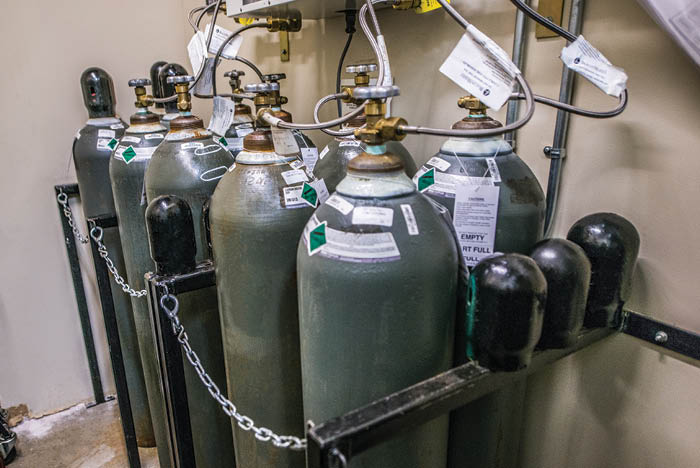IFC requirements for storage of oxygen in health care facilities
For those health care facilities that are required to comply with a version of the International Fire Code (IFC) as well as the National Fire Protection Association's NFPA 99, Health Care Facilities Code, there are some additional requirements with regards to storage enclosures that exceed 504 cubic feet of oxidizing gas (oxygen) as required by Table 105.6.8. (the 2018 IFC is utilized for this discussion).
IFC 5306.2 will require oxidizing gases exceeding the amount noted previously to be located in a one-hour fire-rated exterior room, one-hour fire-rated interior room or a gas cabinet.
In the exterior room, two ventilation openings will be required. Each shall be not less than 36 square inches; and one will be located within 6 inches of the ceiling, and the other will be located within 6 inches of the floor. In the interior room, dedicated exhaust and makeup air is required at a minimum of 1 cubic foot per minute/square foot of the room area and be approved by the authority having jurisdiction and in accordance with the International Mechanical Code.
Additionally, any ductwork required will be required to be enclosed in a one-hour fire-rated shaft from the room to the exterior of the building. In both the interior and exterior rooms, all opening protectives will require one hour.
Concerns regarding the ambient temperatures and fire sprinkler system are similar to NFPA 99.
If the gas cabinet option is utilized, a rated/listed medical gas cabinet may be provided in the room to house cylinders. These cabinets shall be exhausted to a general exhaust system with a face velocity at all access ports being a minimum 200 feet per minute. Similar to the interior room, all ducts shall be enclosed in a one-hour fire-rated shaft. The cabinets shall also have an internal fire sprinkler.
When both codes are applicable, facilities professionals should make sure they are utilizing the worst-case requirements.


